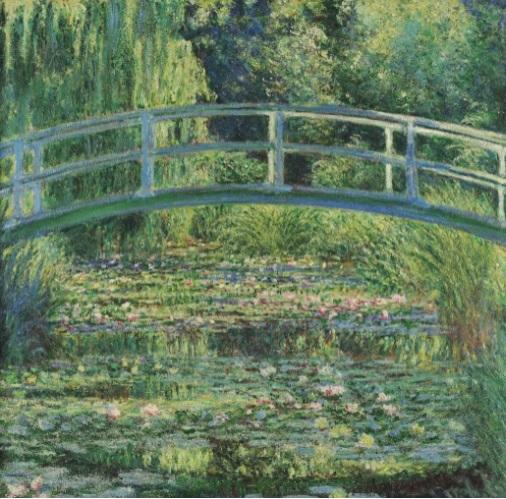Claude Monet’s water lily paintings are significant in art history. In the 1890s, artist Monet had financial worries and bought a property in Giverny. After owning a home and Garden, Monet started to create a garden and pond on his land. He works in the Garden and begins to paint the Garden after completing the Garden.
Monet has no intention of painting a garden. But after finishing, “I saw, all of a sudden, that my pond had become enchanted… Since then, I have had no other mode, as comments by Monet about the inspiration of his Garden to him for painting. From 1897 to 1926, Monet only painted his water lilies and the pond; sometimes, water lilies without reference to the pond, and sometimes, the pond and the surrounding space. He only painted three paintings before completing his Garden. Finally, the Garden became exciting in design and plants, and slowly he started to paint. The Water-Lily Pond work (1899) is outstanding in its formatting of environment trees, weeping willow, and the bridge, which experienced many alterations up to 1910.
Monet transformed the marshy ground behind his home into a pond and bridge garden. On the narrow end of which, he built a Japanese-style wood bridge. After completing this painting, Monet exhibited it at Durand – Ruel’s gallery in 1890; some critics mentioned links between Japanese art and this painting. Monet brings the plant from surrounding places and other locations and plants in his Garden, watering them. After a while of daily interactions, the artist designed the Garden that would be one of his central topics for the rest of his life.
After The Garden’s completion, Monet painted over two hundred water lilies and garden paintings over his artistic career. Water Lily Pond was unique and similar to many others in their shared theme of associating the lilies with reflections of other vegetation on the pool’s surface.
What is inside to see in Monet’s Water Lily Pond? Some reports show that Monet suffered from a Cataract, which affects your vision due to a cloudy area in the lens. According to that report, Monet Suffered his artistic career for the last thirty years because of this vision trouble. That troubled vision creates this illusion of image in his water lily pond paintings. ‘The undersides of the water lilies were dark red, the same colour Monet signed the picture. Red is on the other side of the colour wheel to the green that dominates the painting; this contrast was in keeping with Monet’s interest in complementary colours, mentioned in Google Art and Culture.
What artist endeavours to paint in his last decades with blurred vision? Is only a Garden or his dreams that melt in the Garden? Water Lilies and other plants flourished in artistic life through their vibrant representation in his painting. He painted what he created in his life, both painting and the object of painting, the Garden.
Credit: Google Art and Culture

Krispin Joseph PX, a poet and journalist, completed an MFA in art history and visual studies at the University of Hyderabad.





